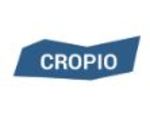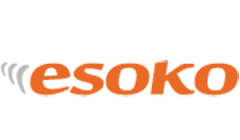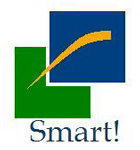Description

Cropio

Ekylibre
Comprehensive Overview: Cropio vs Ekylibre
Cropio and Ekylibre are both in the realm of farm management software solutions, offering distinct functionalities and targeting specific market needs within the agricultural sector.
a) Primary Functions and Target Markets:
Cropio:
- Primary Functions: Cropio is primarily an agro-tech product focused on satellite field monitoring. It provides real-time data analytics related to crop health, soil moisture, weather conditions, and vegetation stages. The platform enables growers to monitor and control their field activities remotely, helping in optimizing resource use and increasing yields.
- Target Markets: Cropio targets large-scale agricultural enterprises and professionals such as agronomists, farm managers, and agribusinesses that are looking for data-driven approaches to enhance crop management and productivity, especially in regions where precision agriculture and smart farming practices are prevalent.
Ekylibre:
- Primary Functions: Ekylibre is an open-source farm management information system that offers a broad scope of functionalities including accounting, inventory management, crop planning, and livestock management. The platform aims to digitalize farm operations entirely by integrating various farm activities into one system.
- Target Markets: Ekylibre targets small to medium-sized farms and agricultural cooperatives looking for a comprehensive solution for managing farm operations. It is attractive to farmers who prefer open-source software solutions for greater customization and cost-effectiveness.
b) Comparison in Terms of Market Share and User Base:
- Cropio: Cropio, being a product of Syngenta since its acquisition, has a strong presence in the precision farming and agribusiness market, especially in regions with developed agricultural sectors. While specific market share data might not be publicly available, its adoption is widespread among large-scale enterprises, primarily in Eastern Europe, the US, and other agriculturally intensive regions.
- Ekylibre: Ekylibre, being open-source, may have a smaller market share compared to proprietary solutions but provides niche value to farms seeking customizable and flexible management systems. Its user base tends to consist of environmentally-conscious, tech-savvy small to medium-sized farmers, mostly in Europe where open-source software has a significant following.
c) Key Differentiating Factors:
-
Technology and Integration: Cropio's strength lies in its advanced satellite and remote sensing technologies, which provide high-resolution, data-driven insights directly related to crop health and field conditions. Ekylibre, on the other hand, differentiates with its open-source nature, offering flexibility for users to customize and integrate the software with other open-source or proprietary systems to suit specific farm needs.
-
Scope and Depth: Cropio focuses heavily on real-time crop monitoring and precision farming technologies, making it ideal for users who prioritize data analytics in their operations. Ekylibre covers a wider range of farm management aspects, providing a holistic solution that includes financial and inventory management, thus appealing to users looking for an all-in-one management system.
-
Business Model: Cropio, as a proprietary software, may require subscription fees or service charges, contributing to a premium position in the market. In contrast, Ekylibre's open-source model reduces entry costs and allows users more financial flexibility, especially for those who can manage technical integrations themselves.
In summary, Cropio is optimal for large-scale operations focusing on precision farming, while Ekylibre serves the needs of small to medium-sized farms looking for a customizable and comprehensive management platform. The choice between them often depends on the level of technical sophistication and specific operational needs of the users.
Contact Info

Year founded :
Not Available
Not Available
Not Available
Not Available
Not Available

Year founded :
2015
+33 9 50 77 21 10
Not Available
France
http://www.linkedin.com/company/ekylibre
Feature Similarity Breakdown: Cropio, Ekylibre
To provide a detailed feature similarity breakdown for Cropio and Ekylibre, let's explore their core functionalities, user interfaces, and distinctive features:
a) Core Features in Common
-
Farm Management: Both platforms offer comprehensive farm management solutions, allowing users to plan and monitor farm activities such as planting, spraying, and harvesting.
-
Data Analytics: Cropio and Ekylibre provide data analytics tools that enable users to analyze field data and make informed decisions related to crop production.
-
Weather Monitoring: Both systems include weather tracking features to provide users with current conditions and forecasts, which aid in planning and executing farming operations.
-
Resource Management: Cropio and Ekylibre help manage resources such as machinery, labor, and inputs (fertilizers, pesticides), optimizing the use of these resources across farming activities.
-
Satellite and Remote Sensing: They incorporate satellite imagery and remote sensing technologies to monitor crop health and development, offering insights into vegetation indices, field variability, and stress detection.
-
Mobile Accessibility: Each platform supports mobile access, allowing farm managers and workers to access information and tools from any location on smartphones and tablets.
b) User Interface Comparison
-
Cropio: It generally features a minimalist and intuitive interface, focusing on ease of use with dashboards that present real-time data in a simplified manner. It is designed to cater to a broad range of users from agronomists to farm managers, with quick navigation to essential tools and reports.
-
Ekylibre: Tends to have a more comprehensive and detailed interface as it supports not just crop management but also extends to aspects of financial and logistics management within agriculture. While insightful, it might have a steeper learning curve due to the breadth of features available in one interface.
c) Unique Features
-
Cropio:
- Real-time Crop Monitoring: This platform excels in real-time monitoring and analytics of crop health using high-resolution satellite imagery, offering timely insights for immediate decision-making.
- Automated Alerts: Cropio can send alerts and notifications on weather changes or anomalies in crop conditions directly to mobile devices, facilitating proactive farm management.
-
Ekylibre:
- Integrated Farm Management: Beyond crop-focused tools, Ekylibre is notable for its integration of accounting, sales, and inventory management, offering an all-in-one platform for entire agricultural business management.
- Open Source and Customizable: Ekylibre is open-source, allowing users and developers to contribute to the platform by adding custom modules or adjustments tailored to specific farming needs.
Both Cropio and Ekylibre provide efficient solutions for modern agricultural management, yet they cater to different needs and operational styles within the farming community. The choice between them will depend largely on whether the user is seeking a specialized crop monitoring tool or a more extensive farm management system.
Features

Not Available

Not Available
Best Fit Use Cases: Cropio, Ekylibre
Cropio and Ekylibre are two different agricultural management software platforms, each designed with specific features and target audiences in mind. Let’s explore the ideal use cases for each:
Cropio
a) For what types of businesses or projects is Cropio the best choice?
Cropio is primarily suited for:
-
Large-Scale Farms and Agribusinesses: It caters to extensive farm operations needing real-time monitoring and data-driven insights. With satellite monitoring and predictive analytics at its core, large-scale enterprises benefit significantly from its capabilities.
-
Precision Agriculture Companies: Businesses focusing on precision farming techniques can leverage Cropio’s detailed satellite imagery and field monitoring. The platform supports precision agriculture by providing insights for optimizing input use like fertilizers and pesticides.
-
Crop Consultants and Agri-Service Providers: Professionals who offer consultancy services can use the data and analytics from Cropio to provide actionable insights and recommendations to their clients.
Ekylibre
b) In what scenarios would Ekylibre be the preferred option?
Ekylibre is typically preferred by:
-
Small to Medium-Sized Farms: It’s ideal for smaller agricultural operations that need an integrated suite for managing various farm activities like production, accounting, sales, and logistics in a user-friendly interface.
-
Organic and Diverse Farming Operations: Farms with diverse operations or organic farming practices can use Ekylibre’s comprehensive management features to track and manage multiple types of crops and livestock under its unified platform.
-
Farmers Interested in Open Source Solutions: Since Ekylibre is built on an open-source platform, it attracts users who like customizable and flexible software solutions they can adapt to their specific needs.
How These Products Cater to Different Industry Verticals or Company Sizes
-
Industry Verticals:
- Cropio is focused on data-heavy operations where the primary need is precision agriculture, making it suitable for enterprises managing vast crop fields, interested in optimizing agricultural inputs, and maximizing yield through technology.
- Ekylibre serves a broader range of agricultural activities, including livestock and arable farming. It is well-suited for vertically integrated operations or those engaging in agro-ecology and sustainable practices.
-
Company Sizes:
- Large Enterprises: Cropio’s robust analytics and data processing capabilities make it more suitable for larger enterprises with the resources to manage and act upon the detailed insights provided.
- Small to Medium Enterprises (SMEs): Ekylibre’s more holistic and modular approach to farm management, along with its affordability as an open-source platform, makes it quite appealing to SMEs that have diversified operations.
In summary, while Cropio excels in providing high-tech solutions suitable for expansive and data-intensive operations, Ekylibre presents a versatile, user-friendly platform that's optimal for smaller, diversified, or sustainability-focused agricultural businesses.
Pricing

Pricing Not Available

Pricing Not Available
Metrics History
Metrics History
Comparing undefined across companies
Conclusion & Final Verdict: Cropio vs Ekylibre
To provide a comprehensive conclusion and final verdict for Cropio and Ekylibre, we need to consider various aspects such as functionality, usability, cost, customer support, and specific user needs. Here is a breakdown:
Final Verdict
a) Best Overall Value
- Cropio tends to offer the best overall value for large enterprises or farms focusing on precision agriculture and keen on leveraging advanced satellite imagery and analysis. Its extensive satellite data integration, real-time monitoring, and user-friendly interface provide a solid platform for maximizing agricultural efficiency at scale.
- Ekylibre, however, shines for smaller to medium-sized operations or those that prefer a more integrated, open-source solution that covers various aspects of farm management including accounting, inventory, and CRM, along with field management.
b) Pros and Cons
Cropio:
-
Pros:
- Advanced satellite imagery and data analysis.
- Real-time monitoring capabilities.
- Intuitive user interface geared towards enhancing decision-making in large-scale operations.
- Strong focus on enhancing precision agriculture practices.
-
Cons:
- Can be costly for smaller farms or individual users.
- May involve a steeper learning curve for those not accustomed to high-level data analytics.
- Primarily focused on satellite data, potentially limiting its use for broader farm management tasks without additional integrations.
Ekylibre:
-
Pros:
- Comprehensive farm management suite covering multiple operational facets.
- Open-source nature allows for customization and flexibility.
- Cost-effective for small to medium farms looking for integrated solutions.
- Community-driven improvements and updates.
-
Cons:
- May require technical expertise for customization and implementation.
- Less focused on advanced remote sensing and satellite data compared to Cropio.
- Potentially less polished user interface due to its open-source model.
c) Recommendations
-
For Large Farms Focused on Precision Agriculture: Choose Cropio. Its superior remote sensing capabilities and real-time monitoring are invaluable for scaling operations efficiently and making data-driven decisions.
-
For Small to Medium Farms Seeking Integrated Management Tools: Opt for Ekylibre. Its all-encompassing approach to farm management, from field activities to financial accounting, makes it a versatile choice, especially with the potential for customization.
-
Technical Skills and Budget Concerns: If technical skills are available in-house and budget is a critical consideration, Ekylibre offers more flexibility and can be tailored to specific needs without upfront licensing costs.
-
High-Sensitivity to Detailed Field Insights: If the priority is having advanced analytics and insights from field operations, Cropio offers more refined tools and insights that can directly impact farming strategies.
In conclusion, the choice between Cropio and Ekylibre would significantly depend on the user's scale of operation, budget constraints, and specific management needs. Both systems have unique strengths that can complement different farming requirements and scales.
Add to compare




